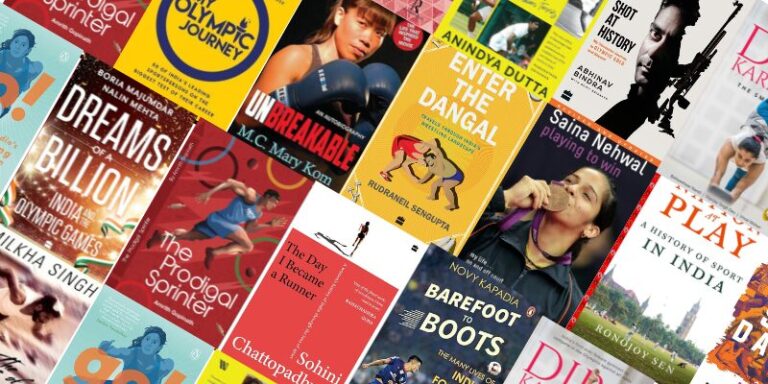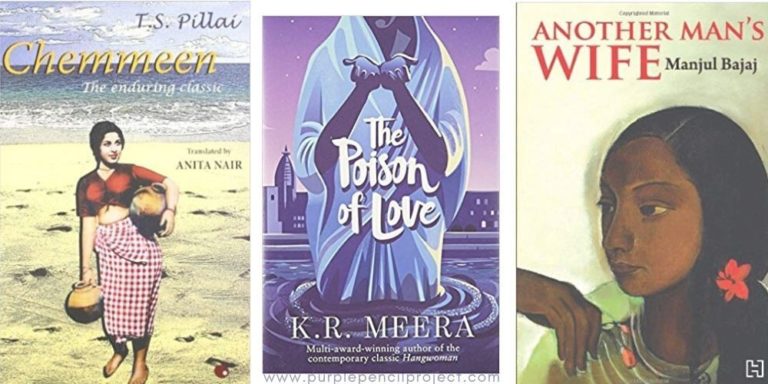Jharkhand is endowed with a rich cultural heritage and bestowed liberally with bounties of nature. The State is a kaleidoscope of past splendours and present glory. A fascinating State with luxuriant forest, captivating wildlife, enthralling waterfalls, exquisite handicrafts, adventurism tourism, sprawling water bodies, enchanting classical and folk dances and music and above all hospitable and peace-loving people.
We encourage you to buy books from a local bookstore. If that is not possible, please use the links on the page and support us. Thank you.
Read through the state that is relatively newly formed, but with the oldest people close to nature and revolutions.

Title: The Oraons of Chota Nagpur: Their History, Economic Life and Social Organization
Author: Sarat Chandra Roy
Publisher: Abhijeet Publications
Blurb: The Oraons are one of the largest tribes in South Asia numbering 17,02,663 Persons at the 1971 Census, about half of them live in Bihar mainly on the Chota Nagpur Plateau the remainder are in Madhya Pradesh, Orissa and West Bengal. They speak a Dravidian language known as Kurukh. Orans are closely related to the neighbouring Munda tribe and the headman of an Oraon is called Munda. Though there is no sub-caste among the Oraons, the Kudas and Kisans having their distinct occupations tend to marry among themselves, beyond this Oraons observe Village and clan exogamy. Boys and girls marry after puberty between 16 to 20 years. This follows a period in which both sexes sleep in a youth dormitory, boys are branded on the arm before being admitted to this institution, dormitory provides a pool of agricultural labour that can be hired when necessary. A small minority follow the tribe are Christian and the Grate majority follow the Hindu form of worship. Police record indicates that even as late as the 1980s, there were a couple of sacrifices a year among the Munda Maria and Oraon tribes and it is assumed that all the cases do not reach police attention, these are illegal sacrifices.
Price: Rs. 1865 || Pages: 500
Title: The Legend of Birsa Munda
Author: Tushin A Sinha, Ankita Verma
Publisher: Manjul Publishing
Blurb: In 19th century India, deep in the heart of what is now the state of Jharkhand, the Adivasis have been leading a life of absolute misery and darkness. The colonial state, with the help of its scheming local collaborators, has cast a net of abuse and exploitation that is tightening around these Adivasis, much like a hangman’s noose does. Everything they hold dear – their land, homes, history, traditions, religion, families – has fallen victim to the grand colonial plan of building a magnificent but merciless empire for the Queen. However, when a people are all but crushed into dust and their identities threatened with a complete erasure, they erupt like a hot, angry whiplash of fire with a roaring so loud that it reverberates in the very heart of the empire and sends a frisson of fear up the spines of those in power.
Based on true events, this epic tale of courage is a tribute to the life of Birsa Munda, who in his very short life, mobilized the tribal community, rebelled against forced conversions, envisioned a fairer, more just society and died fighting for it. A thrilling account that chronicles what most history books don’t mention, The Legend of Birsa Munda is the story of a subaltern tribal hero, whose contribution to India’s struggle for independence must never be forgotten.
Price: Rs. 347 || Pages: 400


Title: Romance with Jharkhand
Author: Radhakrishna
Translator: Ram Bhagwan Singh
Publisher: Satyam Publishing House
Blurb: The proverbial ‘Vardan ka pher’ endeared Radhakrishna to his readers with the comic texture of the story whereas Ramlila shot an irony at the texture of the society. His stories are a matrix of tribal life running through the rugged course. The writer’s self-identification with them is his romance with Jharkhand. The stories celebrate the joys and sorrows of his love. He smiles with her and grieves for her. Radhakrishna lived in Jharkhand and she lived in him.
Price: Rs. 450 || Pages: –
Title: Performing Arts of Junglemahal and Jharkhand
Author: Pashupati Prasad Mahato
Publisher: Purbalok Publication
Blurb: The author as a participant observer of different performing arts of Junglemahal of West Bengal and Jharkhand has narrated the forms and content of those arts in a lively manner. The book contains vivid descriptions of various forms of indigenous people’s culture like Jhumur songs and dances, Chho dance and other forms that are still practised by the people of Jharkhand, parts of West Bengal and Orissa.
Price: Rs. 200 || Pages: 136

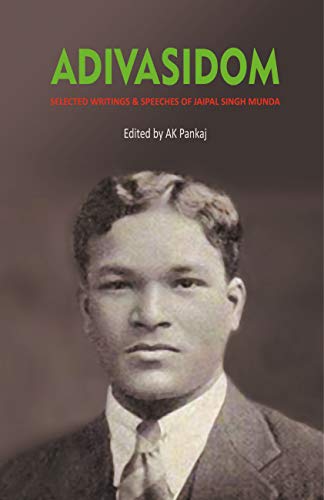
Title: Adivasidom
Author: Jaipal Singh Munda
Publisher: Pyara Kerketta Foundation
Blurb: Who was Jaipal Singh Munda? What was his political-intellectual contribution to Indian Independence and to building a new India? What were the aspirations of the tribal society that Jaipal and other Tribal leaders were representing? Even after seventy years of Independence, history is silent on this. Political historians and scholars of Adivasi subjects have always seen the tribal movements as a ‘demand’. As if like they were subject to non-tribal systems since ancient times and have been demanding some concessions and facilities for themselves. Tribal discussions in the present times are organised only by the non-tribals and in these the voice of the tribal is absent. It means that the current Adivasi discourse is based on secondary content instead of the primary source, which is the most unscientific process and method according to social science. From this viewpoint undoubtedly the book presented is of historic significance. Because it provides us with the primary source for the Adivasi discourse. We all know that Jaipal Singh Munda played a pivotal role in formulating Tribal questions in the 1950s and in establishing ‘Adivasiyat’ (Indignity/Adivasidom) on the Indian political scene. He played a crucial political role and took on the responsibility to unite the tribes of India as ‘Aadivasi’.
Price: Rs. 149 || Pages: 127
Title: Colonial and Contemporary Bihar and Jharkhand
Author: Lata Singh, Biswamoy Pati
Publisher: Primus Books
Blurb: Since colonial times Bihar and Jharkhand have been the arena of diverse social and political struggles. The formation of the state of Jharkhand, which was earlier a part of Bihar and known as Chotanagpur, has been the result of such movements, some of which have not only created democratic space in these regions but also brought about a paradigm shift in Indian politics. This book tries to capture the complexities of some of these diverse movements. The ‘articulation’ of backward castes and tribal protests have been problematized by the emergence of internal hierarchies, differentiations and contestations.
Price: Rs. 871 || Pages: 264

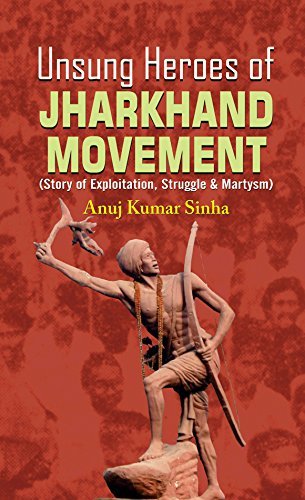
Title: Unsung Heroes Of Jharkhand Movement
Author: Anuj Kumar Sinha
Publisher: Prabhat Prakashan
Blurb: The separate state of Jharkhand was a dream of all. A layout had been made of how it would be. How did this come about? Who made the sacrifices? Where were the people tortured? How many lost their lives? The reason for this book to be written was to document the sacrifices of these people who created Jharkhand. It is a tribute to keep alive their memory and contribution.
The book deals with the stories of these unsung heroes in six sections. The first highlights the tragedy of those killed by the police. Also, those who were caught in cross-firing. The second section comprises stories of revolutionaries who became victims of the mafia and thugs. The third section throws light on the role played by the non-tribal revolutionaries. In the fourth section, the stories are dedicated to the role of women in the Jharkhand movement. The fifth section discusses the role of the Jharkhand student Union (ajsu). The sixth section brings forth the plight of those who died due to lack of treatment, natural causes or in accidents. They, however, played a major role in the movement. It also mentions those who are living and carrying on the good work.
Price: Rs. 352 || Pages: 304
Title: In the Shadows of the State
Author: Alpa Shah
Publisher: Oxford University Press
Blurb: The rich life worlds of Adivasis living in the shadows of the state in the forests and hills of eastern India are often lost in the activism of well-meaning indigenous rights and development activists. Drawing on a decade of ethnographic research in Jharkhand, Alpa Shah follows the everyday lives of some of the poorest Adivasis as they chase away protected wild elephants, try to cut down the forests they allegedly live in harmony with, maintain a healthy scepticism about the revival of indigenous governance systems, escape village life as seasonal casual migrant labour to brick factories and seek to avoid the initial spread of an armed revolution of Maoist guerrillas who claim to represent them. Juxtaposing these experiences with the accounts of village elites and urban activists, Shah reveals a class dimension to indigenous-rights activism, one is easily forgotten in the culture-based identity politics that the movement produces.
Price: Rs. 1826 || Pages: 288
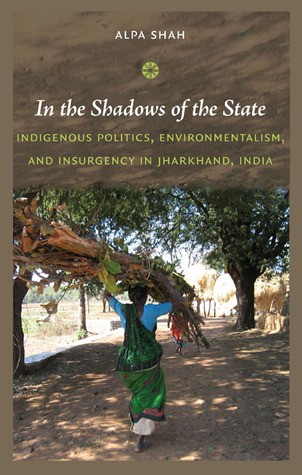
This list of books is curated by Amritesh Mukherjee for Purple Pencil Project’s Instagram.

















